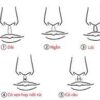Reading Palmistry and Companionship
Welcome to our website dedicated to the intriguing art of palmistry, where we explore how the lines and features of the hand can reveal insights into an individual’s capacity for companionship and support. The unique characteristics and markings on the palm can provide valuable information about a person’s inclination towards companionship, loyalty, and being a supportive presence in others’ lives.

- The Line of Union:
The Line of Union, also known as the Marriage Line or Affection Line, represents an individual’s capacity for companionship and long-term partnerships. A well-defined and clear Line of Union suggests a person who is inclined towards forming strong and meaningful connections with others. This person is likely to be supportive, nurturing, and committed in their relationships, offering unwavering companionship and emotional support. - The Mount of Venus:
The Mount of Venus, located at the base of the thumb, is associated with love, sensuality, and emotional well-being. A well-developed and prominent Mount of Venus suggests a person who values companionship, intimacy, and the emotional well-being of others. This individual is likely to be a supportive and caring presence, offering a comforting and nurturing environment for those around them. - The Line of Apollo:
The Line of Apollo, also known as the Sun Line, represents an individual’s ability to inspire and uplift others. A strong and well-defined Line of Apollo suggests a person who is supportive, encouraging, and has a natural inclination to be a companion in others’ journeys. This person is likely to be a source of motivation and inspiration, offering unwavering support and guidance to those they encounter. - The Shape of the Hand:
The overall shape of the hand can also provide insights into a person’s inclination towards companionship and support. People with round-shaped hands are often associated with a nurturing and caring nature. They tend to possess a genuine desire to accompany others on their life’s journey, offering support, empathy, and a listening ear whenever needed. - The Mount of Moon:
The Mount of Moon, located at the base of the palm below the little finger, is associated with intuition, empathy, and imagination. A well-developed and prominent Mount of Moon suggests a person who is attuned to the emotional needs of others, offering a compassionate and understanding presence. This individual is likely to be a supportive companion, providing a safe space for emotional expression and connection.
It is important to remember that palmistry is an interpretive art and should be approached with respect for individual differences and cultural variations. While the lines and features of the hand can provide insights into a person’s inclination towards companionship, true companionship and support are influenced by various factors, including personal values, communication skills, and the ability to empathize with others.
Please note that palmistry is not a definitive method of assessing someone’s character, and it should not be used as the sole basis for evaluating someone’s capacity for companionship or support. The information provided on this website is for educational and entertainment purposes only.
Explore our website to delve deeper into the intriguing world of palmistry and gain a broader understanding of how the lines and features of the hand can offer insights into an individual’s character traits, including their inclination towards companionship, support, and being a trusted presence in the lives of others.
Note: Palmistry interpretations can vary across cultures and individual experiences. The information provided on this website is a general overview and may differ from specific cultural practices or interpretations.

